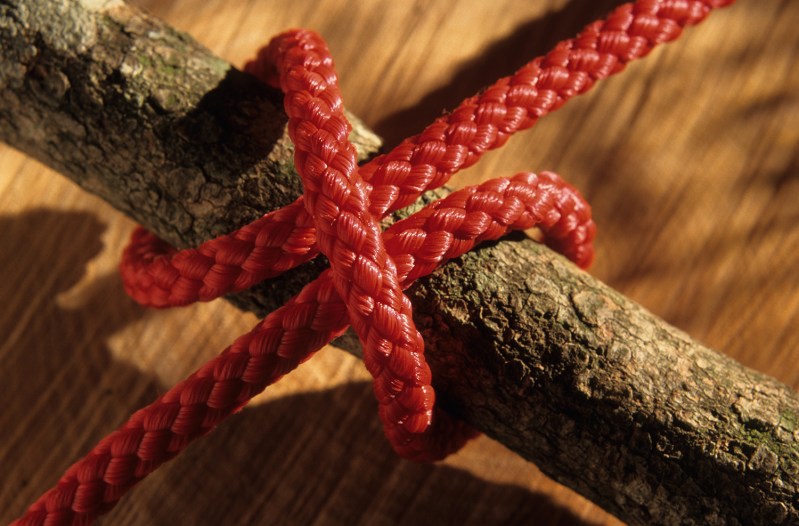
There’s almost no end to what you can achieve armed with a length of rope and an arsenal of outdoor knots to tie it together. If heading into the backcountry, you should always be prepared for survival. While part of that is carrying the right gear, you must know how to use it effectively. You wouldn’t take your woodcutting axe without giving it a few practice swings at home, so why would you expect to tie the right knot without practice?
There is an adage among those who don’t know what to do with rope: if you can’t tie knots, tie lots. If you don’t know what you’re doing, keep tying until your rope feels secure. It works, sometimes. But in a significant way, these people are missing out. Knots, like backcountry navigation skills or making a fire, are part of being an outdoorsman. Outdoor knots come in different shapes and perform various tasks; some are quick, some secure, and others are designed to be untied quickly. These eight are the essential outdoor knots to learn first, so grab a rope and upskill your outdoor self.
Bowline knot
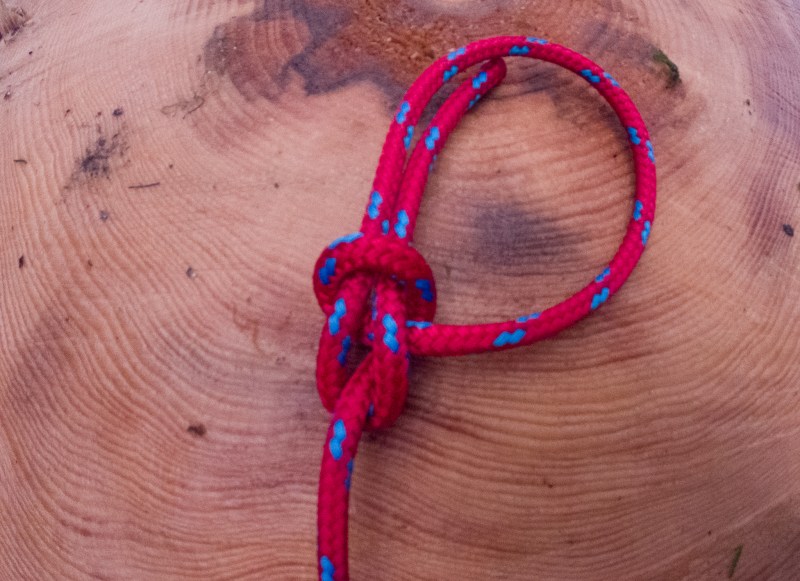
The king of knots. The bowline is a firm favorite when creating a loop at the end of your rope, especially if you need to haul a heavy load. The reason is simple — no matter how much you load a bowline knot, you can always untie it. If you were a Boy Scout, you most likely learned how to tie a bowline knot with much talk about a rabbit coming out from a hole and around a tree.
A bowline can also be tied one-handed, so you can hold your load with one hand and tie your knot with the other. The bowline knot has endless uses, from hanging a bear bag to anchoring your camping tent guide ropes to a tree.
Double figure-eight knot
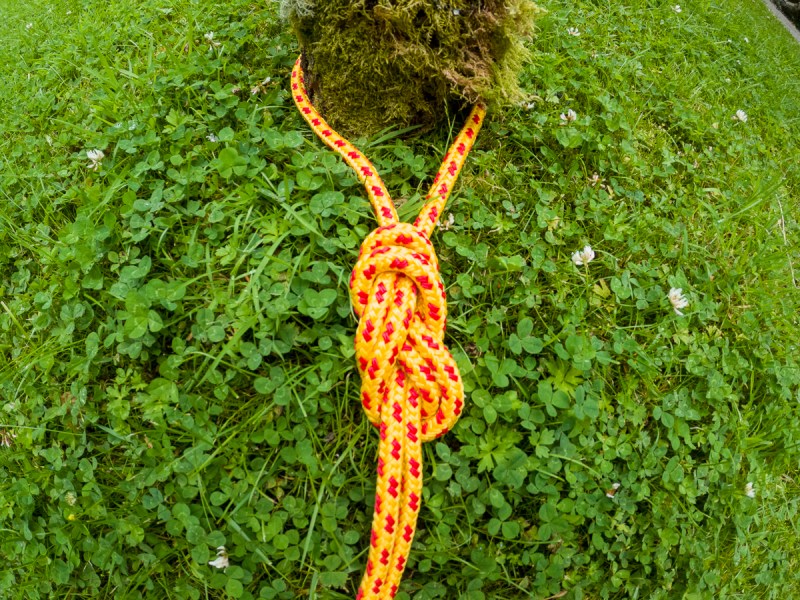
The double figure-eight knot is almost unanimously agreed to be the best knot for climbing. As you load the figure-eight knot, it tightens on itself, and there is no risk of it coming untied — so long as you tie a stopper knot. The figure-eight knot can be tough to untie after it’s been heavily loaded, so it is generally only preferred when you have to be 100% certain your knot isn’t going to come undone.
When you learn to tie a figure-eight knot, we recommend tying it on the bite — a simple double — and a rethreaded figure-eight, which allows you to tie the knot around an object. Climbers mainly use figure-eight knots but can be used to create loops at the end of your rope where a bowline won’t suffice.
Clove hitch knot

The clove hitch knot is a simple bind that is easy to tie and can be adjusted quickly without being untied. It’s widely considered one of the most important knots and is often used as part of an anchoring system. You can tie a clove hitch around an object or as a freestanding knot that you can clip through with a karabiner. We suggest you brush up on both methods when you learn to tie a clove hitch to give you the most versatility. The clove hitch is highly adjustable and can be used for various jobs, from suspending your hammock to starting your lashing on a survival spear.
Double fisherman’s knot
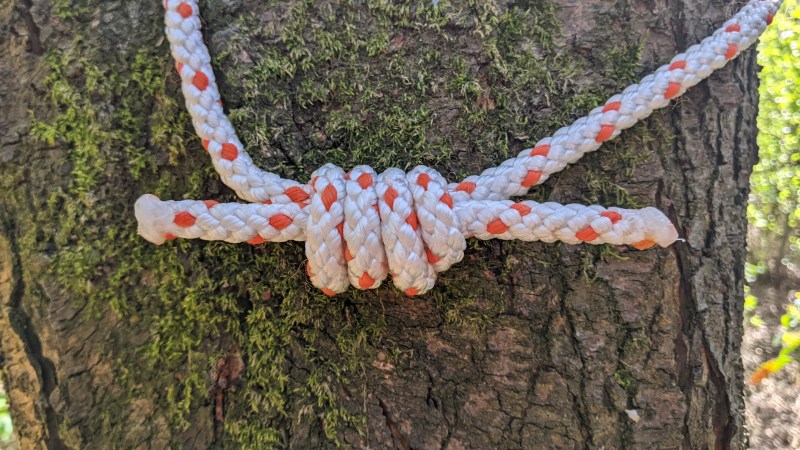
The double fisherman’s knot is a secure and low-profile method of attaching two ends of a rope. If you’ve spent time climbing, you’ll recognize the double fisherman’s knot as two stopper knots back-to-back. As with everything that seems oh-so-simple, this knot can be tied wrong, and the results can be catastrophic. We recommend plenty of practice after you learn to tie a double fisherman’s knot.
Alpine butterfly knot
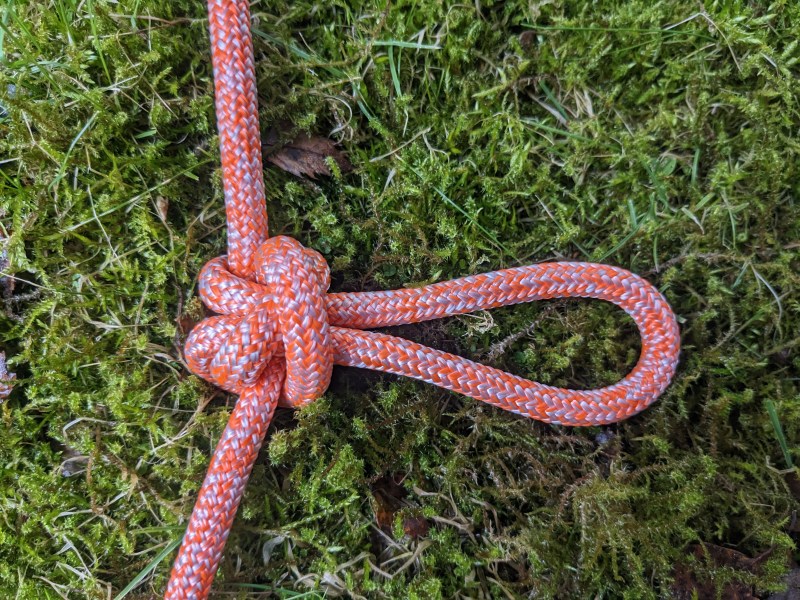
The alpine butterfly knot creates a fixed loop in the middle of a length of rope. While this can be achieved with several other knots, the alpine butterfly knot has two main advantages. Firstly, it can be three-way loaded. This means you can safely put a weighted load on the loop while also loading the two ends of the rope. Secondly, the Alpine Butterfly won’t bind on itself and can always be untied after being loaded, so you aren’t left with a rope full of knots at the end of your trip.
Square knot (aka reef knot)

The square knot — a reef knot — is a simple way to attach two ropes of equal thickness. Because of its simplicity, most people learn to tie a square knot before any other knot when they learn to tie their shoes.
Unfortunately, the square knot can’t be trusted. When laid flat against a surface, it’s a secure knot, but it is known for coming untied. This is most common when you’re using a modern, sheathed rope. Because of this, the square knot is used when there are no significant consequences to your knot coming untied; it might just be a bit irritating. You can use a square knot to tie up a bundle of firewood or a bandage.
Sheet bend knot
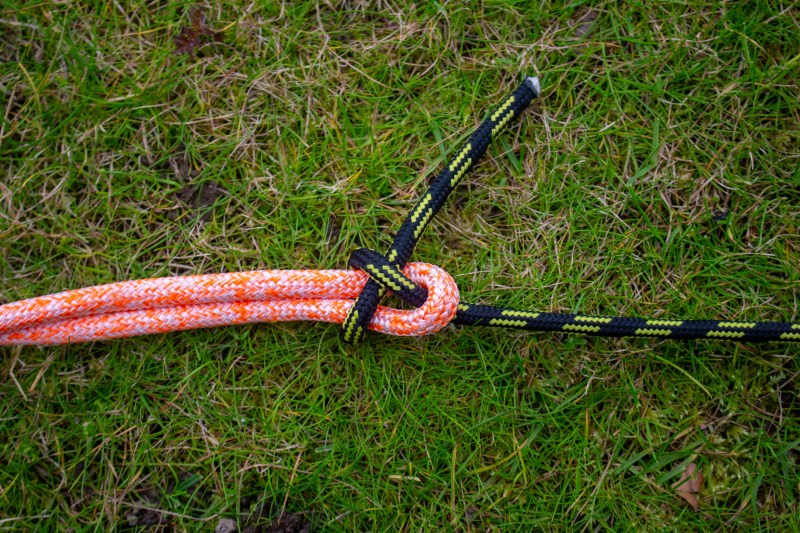
The sheet bend knot is used to attach two ropes of different thicknesses. This knot is a little like a crossover between a square knot and a bowline but has outdoor uses that set it apart. Perhaps the most common use for this knot is attaching a line onto the corner of a tarp that doesn’t have an attachment point. You can use the sheet bend to create a secure point and stake out your tarp to build a shelter.
Trucker’s hitch knot
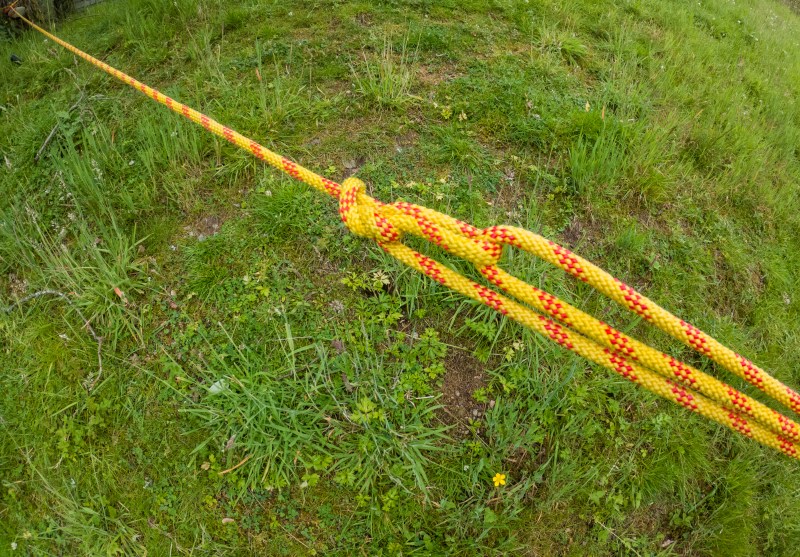
The trucker’s hitch knot works like a pulley, giving you a rough 3:1 system to increase tension. This can be used for setting up taut ridgelines or washing lines in camp or for tying down loads into a truck bed or onto the roof of your car. The trucker’s hitch relies on a midline knot — usually a directional figure-eight or an alpine butterfly — that can be re-threaded and pulled on to increase tension.
Bonus: The no-knot
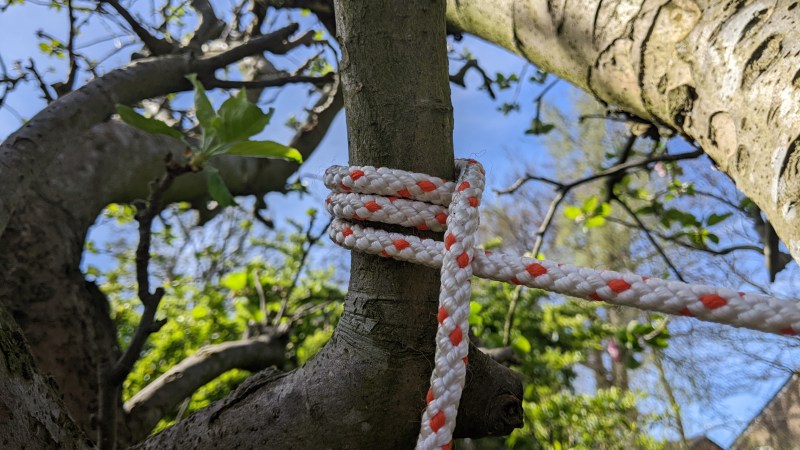
When is a knot not a knot? Our bonus knot is, well, it blurs the line. If a knot is just a way of using friction to secure a rope, why not just use that friction? If you wrap a rope around an object — a tree or pole — three times and pull the end tight, the friction alone tends to hold it securely. It’s not as secure as an actual knot but is a quick-and-dirty option for securing a load temporarily.
When do you need knots in the wilderness?

Let’s discuss in more detail when the above knots will become your friends and when outdoor knot-tying will make you the hero.
When you’re camping and hiking and need to set up a tent, you can secure a tarp over a shelter or rig a clothesline with an outdoor knot. The trucker’s hitch knot is great for adjustable clotheslines, while a square knot is perfect for tying tent guylines.
It almost goes without saying that climbing and rappelling are the most obvious times knots are necessary. The bowline and double fisherman’s knots are crucial for creating secure loops and connections in these situations.
Although we haven’t mentioned boating and sailing above, we have covered the knots that play a critical role in securing boats, mooring lines, and attaching sails — the bowline and clove hitch knots. Also, the sheet bend knot is useful for joining ropes of unequal thickness.



